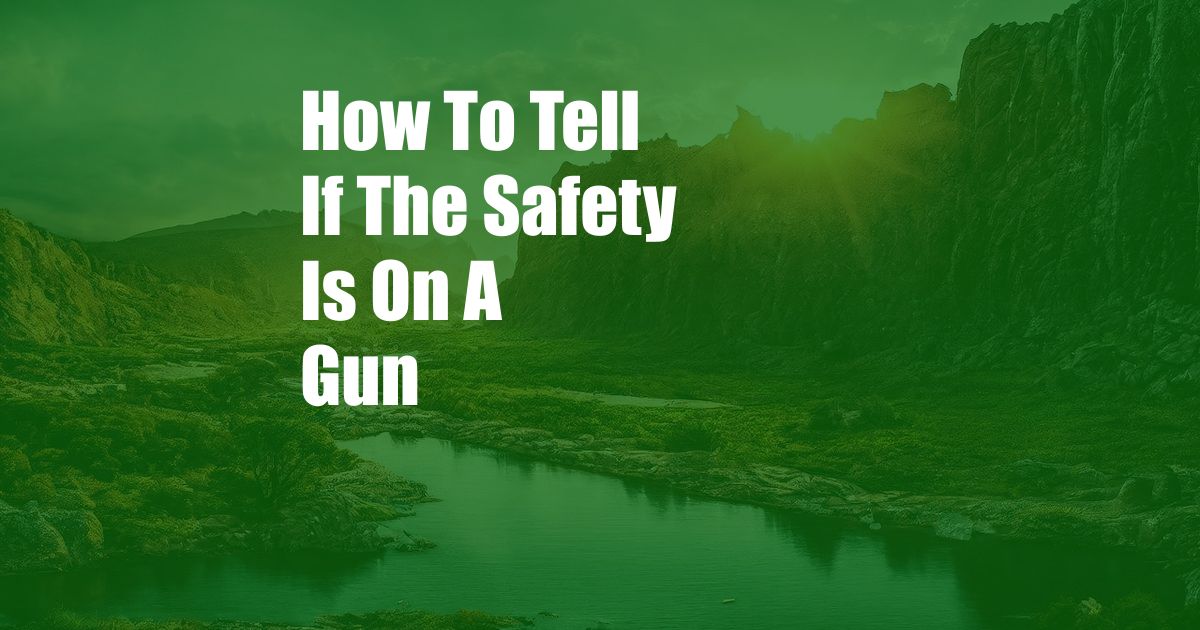
How to Check if the Safety is On a Gun
As a responsible gun owner, it is crucial to always handle your firearm with utmost care and practice proper firearm safety measures. One of the most fundamental aspects of preventing accidental discharges and ensuring your safety is to know how to check if the safety is engaged on your gun. Neglecting this essential step can lead to potentially dangerous situations.
In this comprehensive guide, we will provide you with a detailed explanation of how to check if the safety is on a gun, discussing various types of firearm safeties and offering practical tips to enhance your firearm safety practices. Whether you are a novice firearm enthusiast or an experienced gun owner, this article will provide you with valuable insights into this crucial topic.
Different Types of Gun Safeties
Firearm safeties vary depending on the design and manufacturer of the gun. However, most common types of firearm safeties can be categorized into the following:
- Manual Safeties: Manually operated safeties require the user to physically engage or disengage the safety mechanism. These safeties are typically located on the firearm’s frame or slide and can be levers, buttons, or switches.
- Automatic Safeties: Automatic safeties engage or disengage automatically when certain conditions are met, such as when the magazine is inserted or the slide is closed. These safeties provide an additional layer of protection against accidental discharges.
- Internal Safeties: Internal safeties are built into the firearm’s design and operate without any user input. They prevent the firearm from firing unless certain conditions are met, such as proper trigger pull and grip.
Step-by-Step Guide to Checking Gun Safety
The specific steps for checking the safety on a gun may vary slightly depending on the type of safety and the firearm’s make and model. However, the following general steps can be applied to most firearms:
- Unload the firearm: Before checking the safety, ensure that the firearm is unloaded. Remove the magazine and visually inspect the chamber to confirm that no round is present.
- Identify the safety: Locate the safety mechanism on the firearm. It is usually a lever, button, or switch located on the frame or slide. Refer to your firearm’s user manual or consult with a qualified firearm instructor if you are unsure about the location or operation of the safety.
- Check the safety position: Once you have identified the safety, observe its position. If the safety is engaged, it will typically be in the “safe” position, which may be indicated by a red dot or a symbol (e.g., a lock icon). If the safety is not engaged, it will be in the “fire” position.
- Engage the safety: If the safety is not engaged, move it to the “safe” position. This will prevent the firearm from firing.
- Disengage the safety: When you are ready to fire the firearm, disengage the safety by moving it to the “fire” position.
Tips and Expert Advice for Enhanced Firearm Safety
In addition to knowing how to check the safety on a gun, it is essential to observe the following tips and expert advice to further enhance your firearm safety practices:
- Always keep the firearm pointed in a safe direction: When handling a firearm, always ensure that it is pointed in a safe direction, even when unloading or checking the safety.
- Treat every firearm as if it is loaded: Never assume that a firearm is unloaded. Check the chamber every time you handle it, even if you have just seen it unloaded.
- Store firearms securely: When not in use, store firearms unloaded, locked, and in a secure location that is inaccessible to children and unauthorized persons.
- Take a firearm safety course: Regularly attending firearm safety courses can enhance your knowledge, skills, and confidence in handling firearms safely.
- Consult with a qualified firearm instructor: If you have any doubts or concerns about firearm safety, do not hesitate to consult with a qualified firearm instructor, law enforcement officer, or other knowledgeable professional.
FAQs on Gun Safety
Q: What should I do if I accidentally engage the safety while firing?
A: If you accidentally engage the safety while firing, stop shooting immediately. Keep the firearm pointed in a safe direction, unload it, and re-engage the safety properly.
Q: Is it okay to carry a firearm with the safety disengaged?
A: Generally, it is not recommended to carry a firearm with the safety disengaged, as this increases the risk of accidental discharge. However, some firearms, such as certain hunting rifles, may be designed to be carried with the safety disengaged under certain conditions. Refer to your firearm’s user manual and consult with a qualified firearm instructor for specific guidance.
Conclusion
Checking the safety on a gun is a critical aspect of firearm safety that every gun owner should master. By understanding the different types of gun safeties and following the steps outlined in this guide, you can ensure that your firearm is safe and properly handled. Remember, firearm safety is not just about following rules and regulations; it is about creating a culture of responsible gun ownership where every individual takes personal accountability for ensuring the safety of themselves and others.
If you have any questions or require further clarification on this topic, please do not hesitate to reach out to a qualified firearm instructor or consult with your local law enforcement agency. Stay safe and responsible, and let us all play our part in promoting firearm safety for a better future.